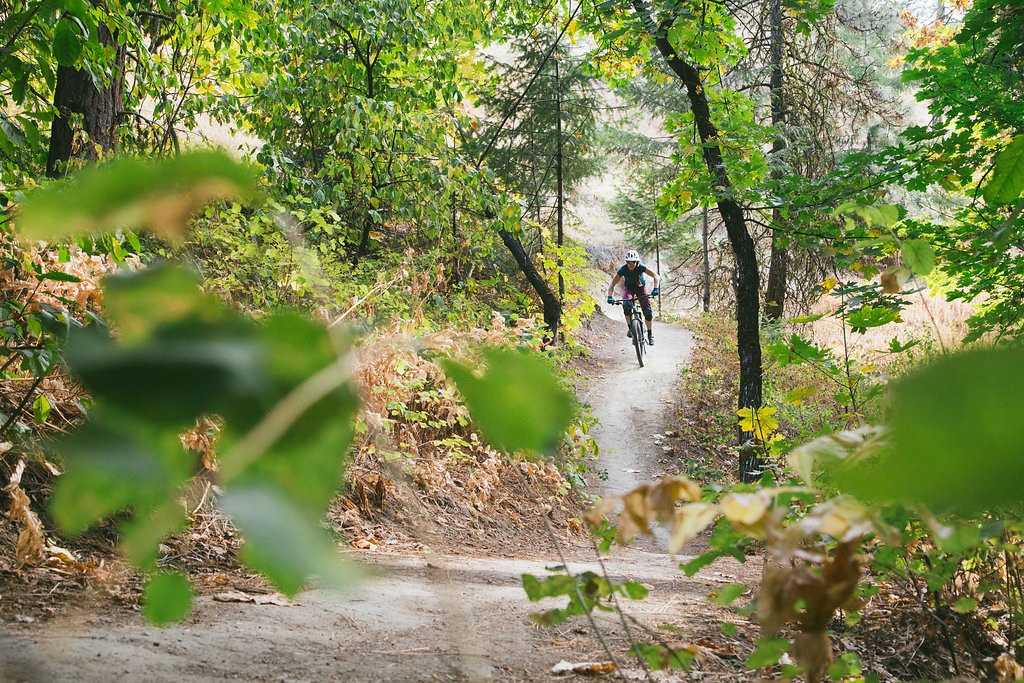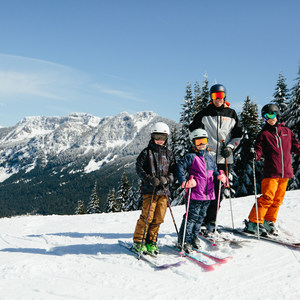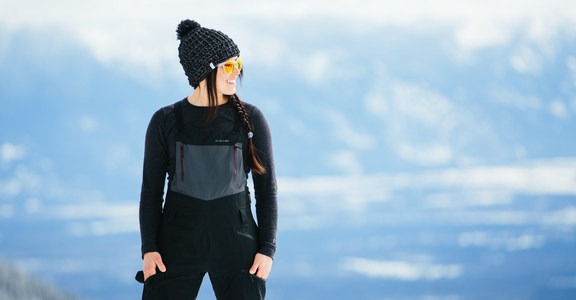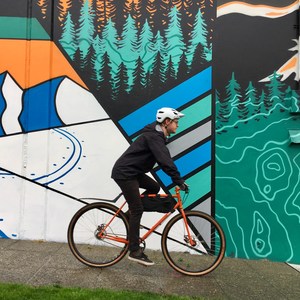So you’re looking to buy a mountain bike? You have probably realized by now that your old trusty-rusty in the back of the garage isn’t the best fit, and with the complexity of mountain bikes these days, you may not know where to start. To find the perfect ride, there are a lot of things to consider - everything from your riding style and your budget to the terrain in your area. To simplify things, we’ve broken down some of the most important factors: the style of bike, the build, and the fit.
1. Bike Style
Possibly the most important question to ask yourself is, "What kind of riding am I going to be doing?" This will determine which style of mountain bike you choose. Think of this like choosing between a sports car and an SUV. Mountain bikes can be categorized into four main categories:
- Cross-country (XC): Built for efficiency and speed, cross-country bikes are pedal-focused powerhouses. These bikes typically have less cushion in their suspension to decrease weight and increase efficiency, sacrificing performance on technical downhill terrain.
- Trail: One of the most versatile styles is the trail mountain bike. They’re they’re do-it-all bikes that can hold their own on the descent as well as the climbs. A trail bike will keep you happy on just about any ride with ups, downs, and anything you can throw at it.
- Enduro/ All-mountain: The enduro and all-mountain categories are where bikes start flipping from being uphill friendly to being more downhill focused. Enduro bikes require more work pedaling due to more downhill-oriented designs and more suspension. The tradeoff comes when you drop in on the downhill - this is where enduro bikes shine. Slacked out geometry and long-travel suspension give you confidence and stability, no matter how gnarly the trail gets.
- Downhill: Lastly, downhill bikes are designed for just that: downhill. They’re burly and built to be your go-to on steep terrain, high speeds, and jumps. A downhill bike isn’t made to pedal uphill, so make sure that if you’re considering a DH bike, your primary riding is accessed by either car shuttles or chairlifts.
Get more details in our guide to mountain bike types.
2. Build
Once you select a bike, you may notice there are different options at various prices. This is due to the bike’s build kit, or the parts and components such as brakes, gears, shifters, handlebars, that make your bike work. This is also what determines, in large part, the price of the final bike. A more expensive build kit will get you nicer components that are often both lighter weight and more durable. Two of the biggest build factors that impact the price of bikes are the suspension and frame materials.
- Suspension: There are two types of suspension to consider when making a mountain bike purchase: hardtail and full suspension. Commonly found on XC bikes, hardtails have a rear-end with no suspension paired with a suspension fork that helps to absorb impact on mellow trails. In contrast, a full suspension bike has both a front and rear shock, which provides more impact absorption and a smoother ride. Full suspension may make it a bit more difficult to climb uphill, but it often comes with a "lock-out" feature to keep the rear shock more rigid on the climbs.
- Frame material: Although bikes can be made out of many different materials, the two most commonly used are aluminum alloy and carbon fiber. The bike’s weight, durability, and price are heavily impacted by the material it is built with. Aluminum is perhaps the most common due to its lower price point and higher durability. Carbon fiber is a popular lightweight alternative, but it comes at a much higher price point.
3. Wheel Size
The next choice you’re going to have to make is which bike wheel size you want - 26-inch, 27.5-inch, or 29-inch. At one time the 26-inch wheel was the standard, but larger wheel sizes have become more popular, and they allow you to roll over obstacles on the trail more easily. Twenty-nine-inch wheels (29ers) handle bigger terrain better, although they’re a bit tougher to handle, while 27.5 inches is a nice balance between 26 inches and 29 inches.
4. Fit
Last but certainly not least, a bike is only good if it fits you right. Mountain bike sizing is fairly simple - small, medium, and large. Most mountain bikes focus on an extremely low stand-over height, so the traditional method of standing over the bike flat-footed doesn’t really work. Check out the size charts from a big brand to get an idea. If you’re on the edge, sizing down will help you if you have a smaller torso or want more control and ability to whip your bike around, while sizing up is useful if you have a larger torso or simply want a more stable ride. When in doubt, don’t be hesitant to test ride and visit your local shop for sizing advice.
5. Accessories
Sure, it is possible to just hop on your new bike and ride in your regular clothes and street shoes, but a couple of mountain bike accessories will go a long way in making your riding more comfortable and more fun. Focusing on the areas where you, the rider, come into contact with your bike will help to avoid common areas of discomfort or pain. The first pain-point to address is your backside, and getting a pair of proper mountain bike shorts and padded liner shorts (also known as chamios), will be a bigtime help. Add gloves to the mix to protect your hands, and you’ll be good to go!
Have more questions? Check out our guide to getting started mountain biking.
We are evo - a ski, snowboard, mountain bike, surf, wake, and skate retailer based in Seattle, Washington, USA, with stores located in Seattle, Portland, and Denver. We also offer trips to remote locations across the globe in search of world-class powder turns, epic waves, and legendary mountain biking through our evoTrip Adventure Travel Trips.
evo explores the collaboration between culture and sport by seamlessly joining art, music, streetwear, skateboarding, snowboarding, skiing, mountain biking and wakeboarding. Our aim is to bring all things relevant to the urban, action sports lifestyle into one creative space. Whether it is on the website, on the phone or in our stores, our aim is to make all who come into contact with evo feel welcome and excited about their experience.






Comments
Sign In and share them.